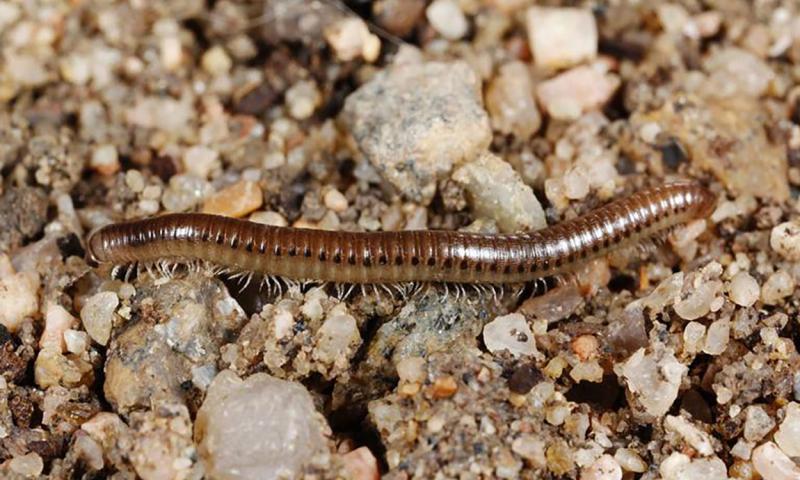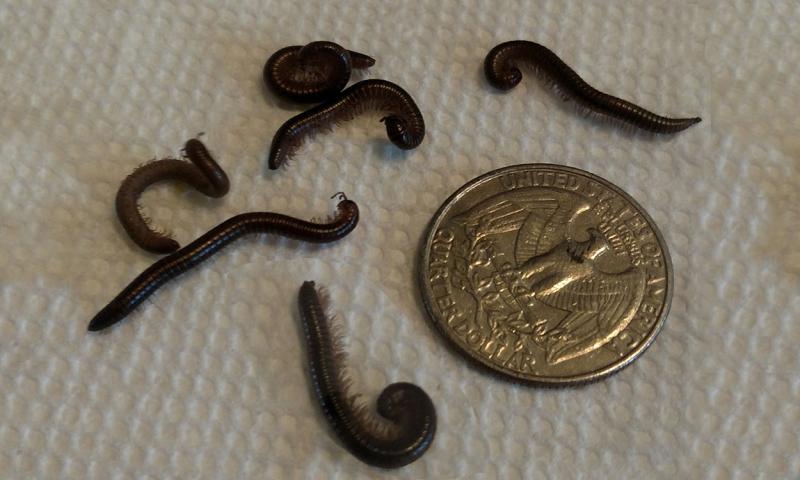
Originally Submitted: September 14, 2021
During late summer and early fall, millipedes are typically a hot topic as they are observed moving into homes, sheds and other outbuildings. Millipedes are easily identified by their numerous legs – having four legs per body segment. The common millipede has 160 legs total, whereas insects only have six legs total. The most frequently observed millipede is approximately one-inch long and very dark brown in color (Figure 1). Millipedes curl up when disturbed or are dead (Figure 2).
Although large numbers of millipedes might seem like a bad thing, they are actually harmless. Millipedes neither bite nor sting, and they don’t feed on structures, plants or items in the home. When found indoors, they are considered accidental entrants, as they are not able to reproduce indoors and will eventually die.

These small millipedes feed on decaying plant material and are considered beneficial organisms as they recycle organic matter. Typically, millipedes are found outdoors in damp areas where decaying material is available. During the spring and fall, millipedes often migrate in search of new feeding sites. Unlike other home-invading pests, millipedes wander aimlessly without searching for anything in particular. When they accidentally find their way into structures, they eventually dry out from lack of moisture. They are most commonly found in dark corners of basements, where they are trying to hide from light.
Millipede management isn’t normally feasible. The best strategy is to ensure that the structure is properly sealed and vacuum or sweep up any dead millipedes. Sources of millipede migrations can include long-term mulch piles, wooded areas or non-managed grassy areas. Millipedes can travel as far as 50 feet or more. For this reason, spraying insecticides isn’t recommended to reduce their populations. In addition, perimeter sprays have limited effectiveness against millipedes.


